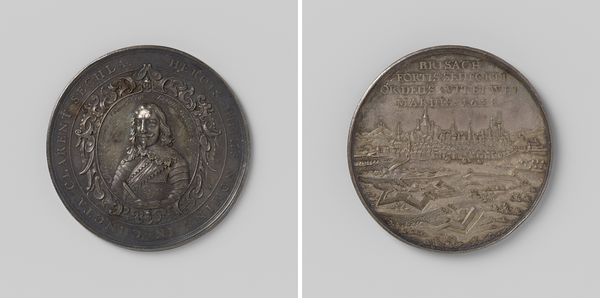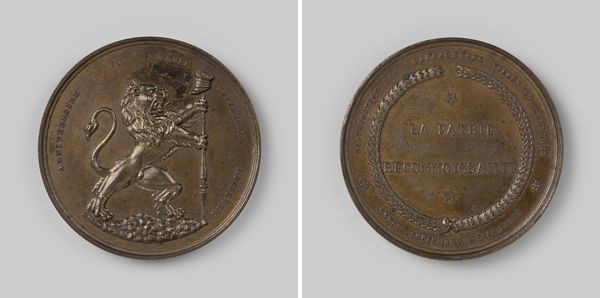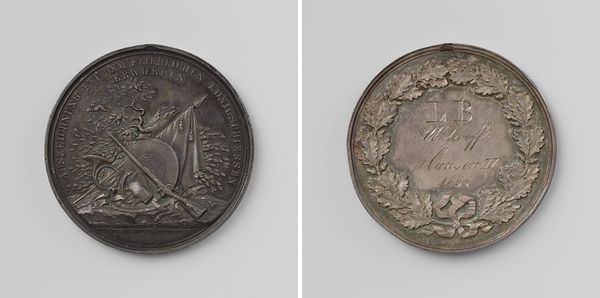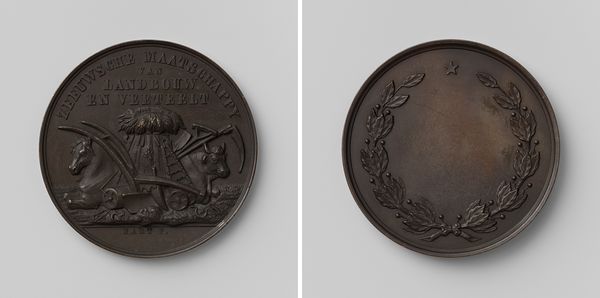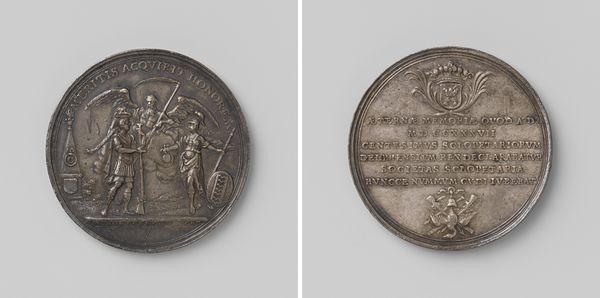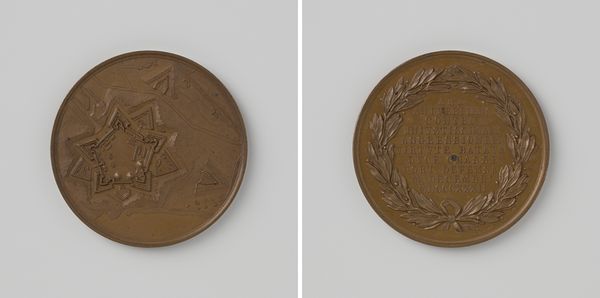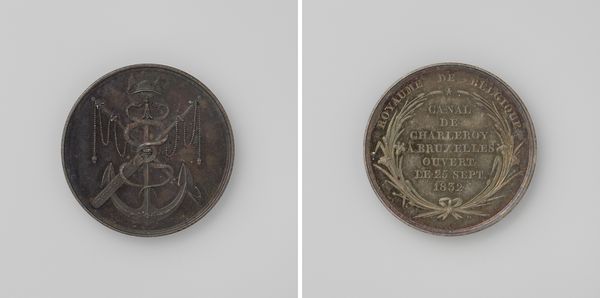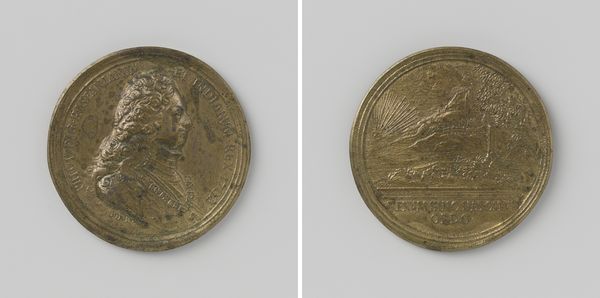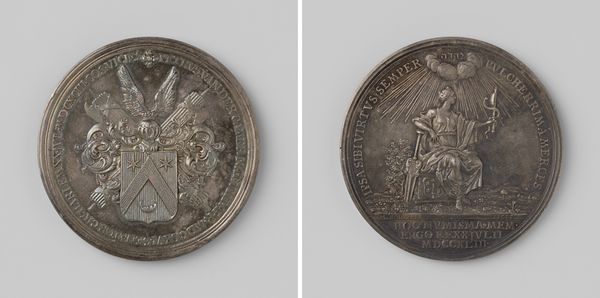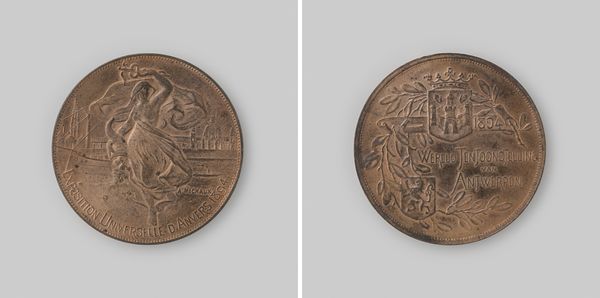
Tweejaarlijks tentoonstelling van schilder- en beeldhouwkunst te 's-Gravenhage, penning uitgereikt aan Johannes Petrus Schouberg 1839
0:00
0:00
metal, relief, bronze, sculpture
#
neoclacissism
#
metal
#
sculpture
#
relief
#
bronze
#
sculpture
#
history-painting
Dimensions: diameter 4.7 cm, weight 39.76 gr
Copyright: Rijks Museum: Open Domain
This is a silver medal awarded to Johannes Petrus Schouberg at the 1829 Biennial Exhibition of Painting and Sculpture in The Hague. Such medals were important symbols of institutional recognition for artists in the 19th century. The medal features allegorical imagery, with a classical female figure representing art, seated amidst sculpture tools. The reverse side bears Schouberg's name and title "Sculptor," surrounded by a wreath. The Netherlands, like many European nations at this time, had established art academies and regular exhibitions to promote and regulate artistic production. These institutions played a powerful role in shaping artistic taste and creating a hierarchy of genres. Public art was seen as a tool for moral and social uplift. Medals like this one reinforced those institutional values and notions of artistic merit. Understanding the medal's significance requires looking into the history of Dutch art institutions, exhibition culture, and the social status of artists in the 19th century. Catalogues, newspaper reviews, and archival records can all provide valuable insights.
Comments
No comments
Be the first to comment and join the conversation on the ultimate creative platform.
